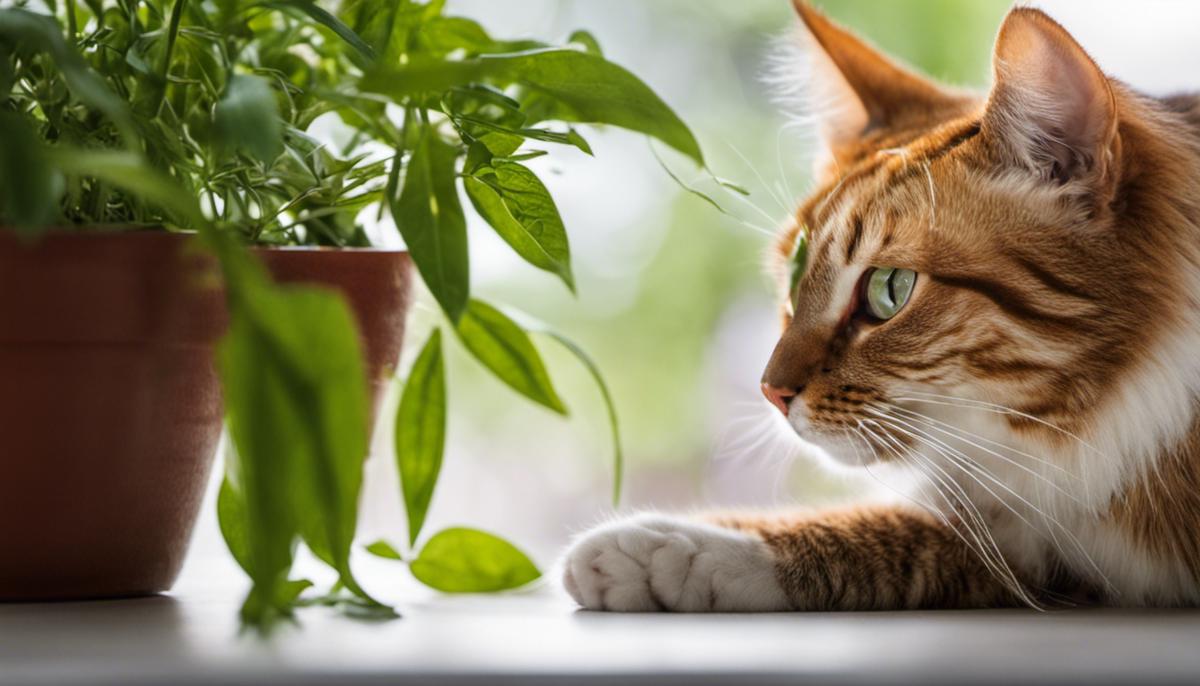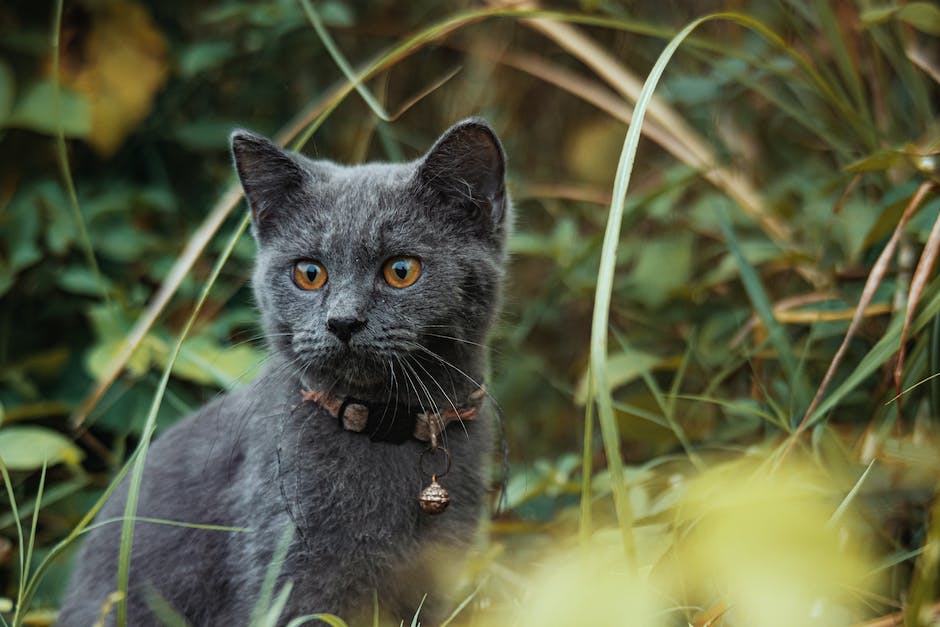Prevent Cats from Harming your Indoor Plants

Any plant enthusiast who also happens to be a cat owner knows the challenging task of maintaining both peacefully under the same roof. Cats, driven by their innate instinct and curiosity, invariably end up interacting with indoor plants, sometimes causing harm to both the plant and themselves. It is therefore of significant importance to understand the cat’s behavior towards plants and devise strategies that can not only safeguard our beloved greenery, but also keep our feline friends safe. From learning why cats show interest in our plants to exploring various cat-safe deterrents and creating a cat-friendly environment, this insightful discussion promises to equip you with useful information and practical tips.
Understanding Cat’s Behavior Towards Plants
“Cat Fancy: Unraveling the Feline Fascination with Houseplants”
Admit it, as a family, you lavish love upon every living being in your house – kids, spouse, and yes, those ever-inquisitive feline members too! Like us, our pesky yet adorable kittos have an intense curiosity about their environment. One common cat wonder that puzzles most pet lovers is why their furry friends show a keen interest in houseplants.
Cats are naturally curious. They enjoy exploring their surroundings, and houseplants, with their varied textures and wavy movements, can be an irresistible lure for a fun “pounce and play” session. Cats can appear mystified by the rustling leaves and the swaying branches, evoking their predatory instincts.
In the wild, cats supplement their diet with specific types of grasses and plants to aid digestion. They instinctively seek out certain vegetation to help with hairball elimination, in case of illness, or to fulfill any nutritional deficit. When cats nibble on our beloved fern or philodendron, they might merely be mimicking their wild counterparts.
Here comes the not-so-fun part. Some cats might also be tempted to use the plants as an alternative to their litter box. Cats are attracted to soft soil-like substances, which unfortunately includes your potting soil. Spraying a cat-safe, plant-friendly repellent around your plants or adding pebble mulch to your pots can deter this behavior.
But does it mean giving up on the dream of a lush indoor garden? Not at all! You can find many non-toxic plants that are safe for friends of the feline kind. Spider plants, areca palms, and Christmas cacti are just a few popular yet safe choices for cat-friendly homes.
Remember, the key is balancing your love for greenery and your love for your frisky feline! Creating boundaries, ensuring proper play and engagement, and opting for cat-safe houseplants can harmonize your indoor garden with your adventurous fur babies!
As you explore this unchartered territory with your feline friend, remember to share your experiences. Let’s learn from each other and continue to celebrate the chaos, laughter, and love that our furry friends bring into our homes. Yes, even when they’re causing a mess on your favorite pot plant! It’s all a part of the grand adventure of family living, right? Enjoy every bit of it!

Safe and Non-toxic Deterrents for Cats
Natural Strategies for Protecting Your Plants From Cats
In our ongoing dialogue around gracefully marrying a love for both flora and felines, we’re delving further into non-toxic methods to keep our four-legged friends away from our precious plants. After discussing why cats are drawn to plants and identifying numerous pet-safe plant options for indoor liking, it’s time to venture into strategies that can help discourage your feline from turning your houseplants into their new favorite toy or snack.
A great starting point is introducing alternate sources of greenery. Cats seek out certain plants for their digestion and nutritional needs. By providing cat-friendly plants like catnip or cat grass, you give your feline an acceptable place to indulge their craving for greens, keeping them away from the rest of your plants. Also, this could significantly reduce the chance they’ll use your valuable verdant houseplants as their personal litter box.
Next, consider leveraging your cat’s sensitive sense of smell. While they are naturally attracted to specific scents, other aromas may deter them. Several non-toxic scents that cats tend to dislike include citrus, rosemary, and cinnamon. Try placing citrus peels, rosemary sprigs, or cinnamon sticks around your plants to help deter your cat. Alternatively, consider using a non-toxic essential oil spray containing these scents. Before applying any essential oil, ensure it’s safe for cats as some essential oils can be hazardous.
Utilizing texture can also be effective. Cats are generally put off by unusual or uncomfortable textures under their paws. Materials like aluminum foil or rough sisal fabric around the pot or base of the plant are a natural, non-toxic deterrent.
Another valuable tactic revolves around modifying your cat’s environment. Cat-proof your plant space by placing plants on an unreachable shelf, hanging baskets from the ceiling, or surrounding your garden area with a pet gate. This not only protects your plants but also keeps your little explorer safe from harmful or poisonous plants.
Lastly, remember that cats often seek out houseplants out of boredom or interest. Filled with shapes, textures, and movements, plants are naturally enticing. Combat this by ensuring your cat has plenty of engaging toys and activities to keep them occupied. A well-exercised cat will have less interest in your plants.
Essentially, curbing our cat’s interest in our precious green friends becomes much less challenging when we offer alternatives, set fair boundaries, and capitalize on their natural instincts. As we create a safe haven for both plants and pets, our homes become a harmonious place enriched by nature’s bounty and a cat’s playful energy. Let’s continue to learn from each other’s experiences, rejoicing in the joy of nurturing both plants and pets.

Creating a Cat-friendly Environment
Creating a Cat-Friendly World While Preserving Your Plant Paradise
Picture this – your home is nurturing a thriving assortment of greenery, an indoor jungle that showcases your love for plants. But at the same time, you’re also housing a spirited feline friend, whose curiosity is as tall as the sky. The challenge now, is to strike a symbiotic harmony between your houseplants and your frisky companion. But how?
Let’s embark on an exciting journey of creating a shared space for both your leafy companions and your furry pal while ensuring mutual respect and safety.
One way to protect your plants from mischievous paws is by setting up barriers. Thankfully, this doesn’t have to mean unsightly fences or wires. Instead, why not get creative with chic plant stands? They elevate your plants out of paw-reach, plus they add a touch of style to your living space.
Cat trees are another fantastic addition. They offer your cat a personal kingdom where they can entertain themselves without intruding on your plant’s growth. Models with scratching posts, lounging decks, and dangling toys will capture your cat’s attention in a much more engaging way than any plant can. Imagine yourself watching with amusement as your cat’s energy is channeled towards a rigorous play session instead of a pot of foliage. Sounds fair, right?
Proper plant placement might seem obvious, but it’s an easy and cost-effective measure. High shelves or hanging pots are your best bet. As a bonus, observing your feline’s attempts to decode the newfound plant locations will bring a hearty chuckle or two.
But what about discouragement methods? Aluminum foil or double-sided tape might prove dissuasive. Cats generally aren’t fans of the texture nor the noise these materials produce. Simply laying strips along your planter edges may safely ward off your frisky explorer.
It’s also crucial to think about your feline’s nutritional needs and habits. Redirecting their plant-chewing tendencies can be achieved by providing cat grass. It offers a safe outlet for cats to indulge in their natural instinct to nibble on greenery. You might just find yourself feeling relieved as your cat revels in their special grass, leaving your beloved plants untouched.
Finally, consider the power of training. With consistent, positive reinforcement and a patient heart, cats can learn to respect plant boundaries. Reward your feline with a treat or cuddle each time they evade the plants – remember, all victories, however small, are worth celebrating.
Striking the right balance doesn’t mean having to choose between your love for plants and the well-being of your cats. Instead, it’s about creating an environment that can happily cater to your hobbies and your feline’s needs simultaneously.
Remember, your efforts are towards a broader goal – a harmonious household that thrives on mutual respect and shared spaces. As cat owners, gardeners, or people who love both, we’re always up for a good challenge. With a pinch of creativity and a whole lot of love, achieving this goal will be an enriching and fulfilling journey. Together, let’s build homes where happiness grows and love blooms. This, dear friends, is the heart of homemaking.

With patience and understanding, it is entirely possible to strike a harmonious balance between your feline companions and your cherished foliage. Employing such measures as using safe, non-toxic deterrents and creating a cat-friendly environment with appropriate alternatives can make a huge difference. Remember, it’s not about punishing curiosity or instinct, it’s about guiding it in a way that keeps your cat entertained, your plants thriving, and your home a place of peace for all its inhabitants. By taking the time to truly understand your cat’s behaviour and outfit your home appropriately, you’ll ensure that you, your cat, and your plants can co-exist without conflict.



